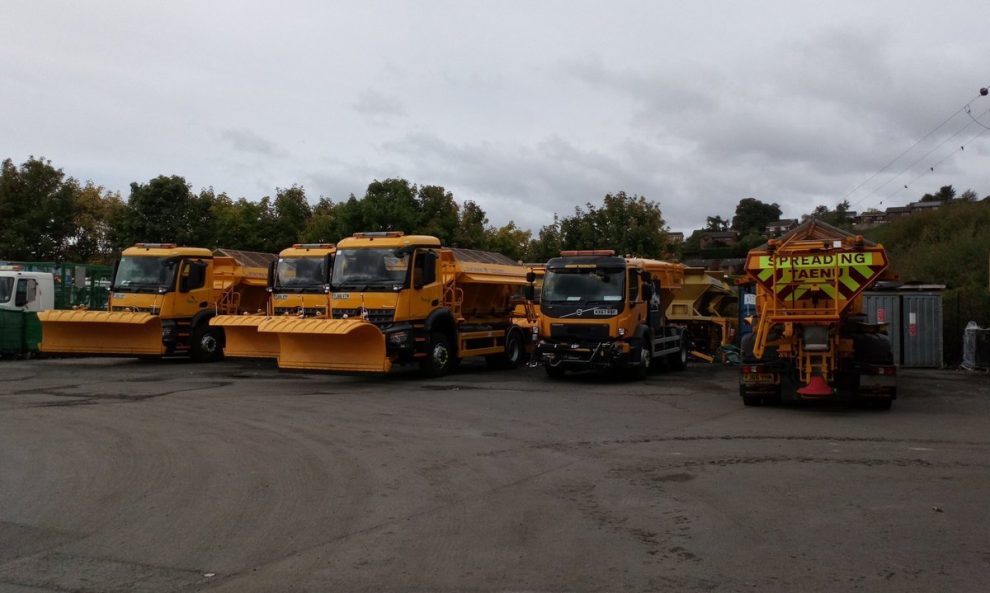POWYS residents will be asked to help shape the council’s policy on which roads will be prioritised for gritting over the winter months.
At a cabinet meeting on Tuesday, March 28, councillors are set to agree the second phase to Powys County Council’s Winter Service review which includes a recommendation for a “public engagement exercise” on the proposals.
The financial implications of the changes have not been worked out yet.
The first phase of the Winter Service review was agreed back in October 2019 and was criticised by councillors for potentially causing more danger on Powys roads as well as harming the economy.
The changes made at the time also saved the council £71,000.
The report by senior highways manager, Shaun James said: “The winter route hierarchy currently in use has not had a major review for 20 years.
“During which time changes have taken place to the location of amenities, transport links, essential services, and best practice.
“This report only focuses on gritting routes that will be used to treat county roads and not trunk roads as that is a matter for Welsh Government as the Highway Authority.”
In Powys the trunk roads such as the A470 and A483 are managed by the North and Mid Wales Trunk agency on behalf of the government.
The council’s highways department as a contractor is required to work under a different set of guidelines when gritting those routes.
Mr James said: “This report sets out the criteria and categorisation of the proposed winter service hierarchy and a public engagement exercise is proposed to help the service shape this model.”
The report explains that the council has used guidance from the National Winter Service Research Group (NWSRG) and the Well-managed Highway Infrastructure: A Code of Practice
This provides a “risk and evidence based approach” and a number of factors will be considered for each road which includes traffic volume, public transport, location of schools, hospitals, medical centres, care homes and emergency services.
The report said: “The guidance recognises financial constraints as a factor in categorisation, for it is recognised that authorities cannot be reasonably expected to protect against ice and snow at all times on all part of the network.”
“The responsibility for the authority is to demonstrate that their policy is reasonable and meets their statutory duties in respect of the risks to road users posed by snow and ice,”
Following talks with the Jane Thomas the head of finance, the “financial impact” of the new operating model will be included in a second report on the review,
This will be published once the maps for the new routes “have been developed” and will lead to a further public consultation before they are adopted.
Powys has 5,500 kilometres of road, the second biggest road network in the whole of the UK.
This is made up of 431km of trunk roads, 238km of County (category A) roads, 2,706km of B and C and 2,126km of minor surface roads.
If these are all put together it would stretch to Beijing – the capital city of China.
The five potential “tiers” which go from high to low priority are:
Tier 1 – Purple – is seen as a strategic road with a traffic volume of 20,000 vehicles or more, likely to be “A” or class one roads.
Tier 2 – Blue – Roads with a traffic volume of 5,000 to 10,000 vehicles – secondary factors also include the location bus stations and car parks and it’s likely to cover Powys’s bigger towns of Brecon, Llandrindod Wells, Machynlleth, Newtown and Ystradgynlais.
Tier 3 – Grey – these are likely to be the roads in and out of the county’s larger villages.
Tier 4 – Yellow – roads to and from smaller villages.
Tier 5 – Orange – minor roads likely to be to and from “rural” or “limited growth settlements.”



















